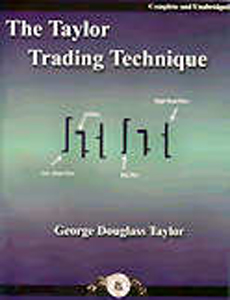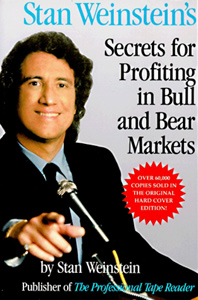Australian Market Preview
Further Reading
Here is an update on the different sectors of Australian market from market analyst Macquarie Research Equities.
Record Oil - The Impact of Black Gold
Oil prices have quintupled since 2002 and Goldman Sachs analysts believe the price of oil can reach $200 per barrel within 18 months due to supply constraints. Macquarie Research (MRE) examined the impact of soaring oil prices on equity markets which, if sustained, could dent corporate earnings. MRE believe the best stocks/sectors are those with above average earnings capacity, strong balance sheets, pricing power and below average transport exposure. Telco’s (Telstra and Singtel), Consumer Staples (Coca-Cola and Lion Nathan), Healthcare (CSL and Cochlear) and in particular, Mining Services (Worley Parsons, Leightons, Orica and Incitec Pivot Ltd) are the sectors that Macquarie Research expect will be least impacted by elevated energy prices.
In the resources sector, fuel and energy represent 20-30% of mining companies’ cost base comprised of diesel, coal, electricity and gas. The larger diversified miners will be advantaged in terms of global procurement bargaining power along with companies whose operations are less power intensive such as Western Areas and Sally Malay. Lihir Gold, which uses alternative power (geothermal) will enjoy cost savings also. MRE anticipate continued high levels of investment and consolidation in the energy sector with contractors such as Worley Parsons, United Group, Downer EDI and Transfield set to benefit.
Duet Group and Spark Infrastructure are the preferred picks in the utilities sector as they have access to their own gas positions. Rising gas prices, the unknown potential uplift of coal-seam gas reserves and carbon emissions trading will put upward pressure on electricity prices. The momentum of liquefied natural gas as a cleaner, more flexible and adaptable form of energy has grown with the Santos- Petronas JV; the Queensland Gas Company alliance with British Gas and Origin’s rejection of BG’s bid.
Stocks in the materials sector will experience higher transport and freight costs putting margins under pressure. Boral, CSR and James Hardies will bear the brunt. Upward pressure on the Australian dollar will make conditions more favourable for importers. Alternative energy sources become increasingly attractive such as CSR’s ethanol business. Gunns and Orica remain MRE’s picks in the sector due to their ability to pass on and recover costs.
Oil price increases in the 1st half of 2008 combined with higher interest rates have contributed to a 0.5% rise in inflation and a 2% reduction in consumer discretionary spending. MRE expect the retail trade component of household consumption to fall from 4.3% to 1.6% in 2009. Coca Cola and Lion Nathan are best placed in the consumer sector to weather the storm due to their strong pricing power and defensive demand.
MIG is MRE’s preferred exposure in the infrastructure sector as household budgets crimp car and taxi usage. Australian retail fuel prices are up 11-17% over the last 12 months resulting in more fuel-efficient modes of transport such as trains and boats capturing market share. Despite higher car-running costs, Australians still love their cars and have the second highest rate of car ownership in the world.In the transport sector, airlines are the most vulnerable to oil prices with Virgin Blue more exposed than Qantas with less leverage to rebalance its fleet and route networks. Brambles pass fuel costs through to customers although there are visible time lags internationally. Toll Holdings are able to pass fuel costs through on a monthly basis and therefore have the least exposure, however Brambles remain MRE’s pick.
MRE foresee earnings downgrades for weaker franchises in transport, media, discretionary retail, residential construction and building materials sectors due to the higher input costs, higher debt charges and softer revenues as a result of higher oil prices. The Australian market is undergoing a huge structural change with investors shifting from industrials and financials into resources.
- How to Trade Forex and Gold Options
- How to Trade the Gold Price and Profit!
- Forex Trading the EUR/USD Pair € EURO and $ US Dollar
- How to Trade Stock Market Indices S&P500
- How to Trade Crude Oil
- Forex Trading Psychology
- What Are Broker Recommendations?
- Free Tickets to Trading & Investing Seminar & Expo ($18) Brisbane 2013
- Stock Calc App
- All About Warrants
- Introduction to Exchange Traded Funds
- Introduction to Exchange Traded Funds: Features
- Introduction to Exchange Traded Funds: Domestic ETFs
- Introduction to Exchange Traded Funds: International ETFs
- Exchange Traded Commodities
- Australian Stock Scan
- Australian Online Share Trading
- List of Trading Books
- Interesting Thoughts about the Australian Dollar
- What's the Meaning of Hawkish?
- Do You Know How To Use the P/E Ratio
- Trading, Religion and Politics - Do They Have Anything in Common?
- Shares that are Volatile that Double and Half in the Short Term
- Telstra (TLS) T3
- Margin Call by E-mail
- The Cost of Holding a Position
- Lack of Disclosure: Compensation from ASX Listed Company
- Unrealistic Returns and Benchmarks
- CMC Markets Down
- Quality versus Quantity Forex Trading
- Woolworths 1H Sales $30.7bn up 3.2%
Date added 31-01-2013 - ASIC Fines CommBank's CommSec
Date added 25-09-2012 - Industry Super Network Calls to Ban High Frequency Trading (HFT)
Date added 22-09-2012 - NAB Launches Online Share Trading Platform
Date added 19-09-2012 - Reserve Bank of Australia Says 23 Countries Holding AUD
Date added 18-09-2012 - Australia Post Digital Mailbox
Date added 10-09-2012 - Winners and Losers of Trading for Week 2
Date added 16-01-2012 - 2012's First Week of the Best and Worst Traded Stocks
Date added 09-01-2012 - 2011's Last Best and Worst Traded Stocks
Date added 05-01-2012 - Best and Worst Pre-Christmas Traded Stocks
Date added 30-12-2011 - Trading Winners and Losers for Dec. 12-16
Date added 19-12-2011 - Best and Worst Traded Stocks for Dec. 5-9
Date added 13-12-2011 - Top 3 Best and Worst Traded Stocks
Date added 05-12-2011 - ASX Glitch Trading Halt
Date added 27-10-2011 - Worst Trade Stocks (and the Best)
Date added 06-08-2011
Top 150 Public Companies Listed on the Australian Stockmarket as at 29/05/2009
- BHP Billiton
- Westpac Banking Corporation (WBC)
- Commonwealth Bank of Australia (CBA)
- National Australia Bank (NAB)
- Telstra (TLS)
- ANZ
- News Corporation (NWS)
- Woolworths Limited(WOW)
- Woodside Petroleum Limited (WPL)
- Rio Tinto
- Westfield Group (WDC)
- Westfarmers Limited (WES)
- QBE Insurance
- CSL
- Newcrest Mining Limited (NCM)
- Origin Energy Limited (ORG)
- Santos Limited (STO)
- AMP Limited (AMP)
- Macquarie Group (MQG)
- Foster’s Group Limited (FGL)
Recommended Articles
Company Profiles
ASX GICS Sector Company List
- Automobile & Components
- Banks
- Capital Goods
- Commercial Services & Supplies
- Consumer Durables & Apparel
- Consumer Services
- Diversified Financials
- Energy
- Food & Staples Retailing
- Food Beverage & Tobacco
- Health Care Equipment & Services
- Insurance
- Materials
- Media
- Pharmaceuticals, Biotechnology & Life Sciences
- Real Estate
- Retailing
- Semiconductors & Semiconductor Equipment
- Software & Services
- Technology Hardware & Equipment
- Telecommunication Services
- Transportation
- Utilities




